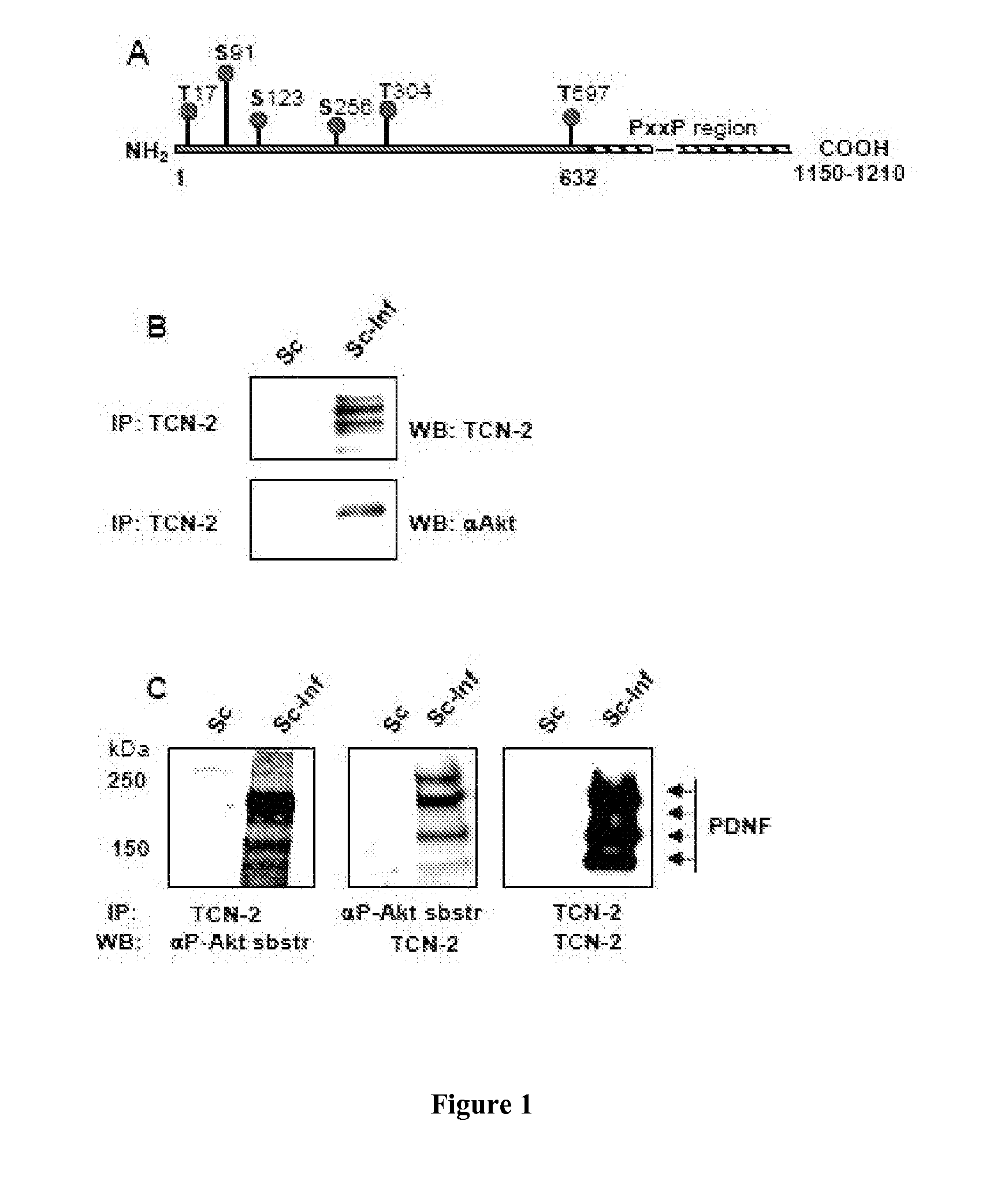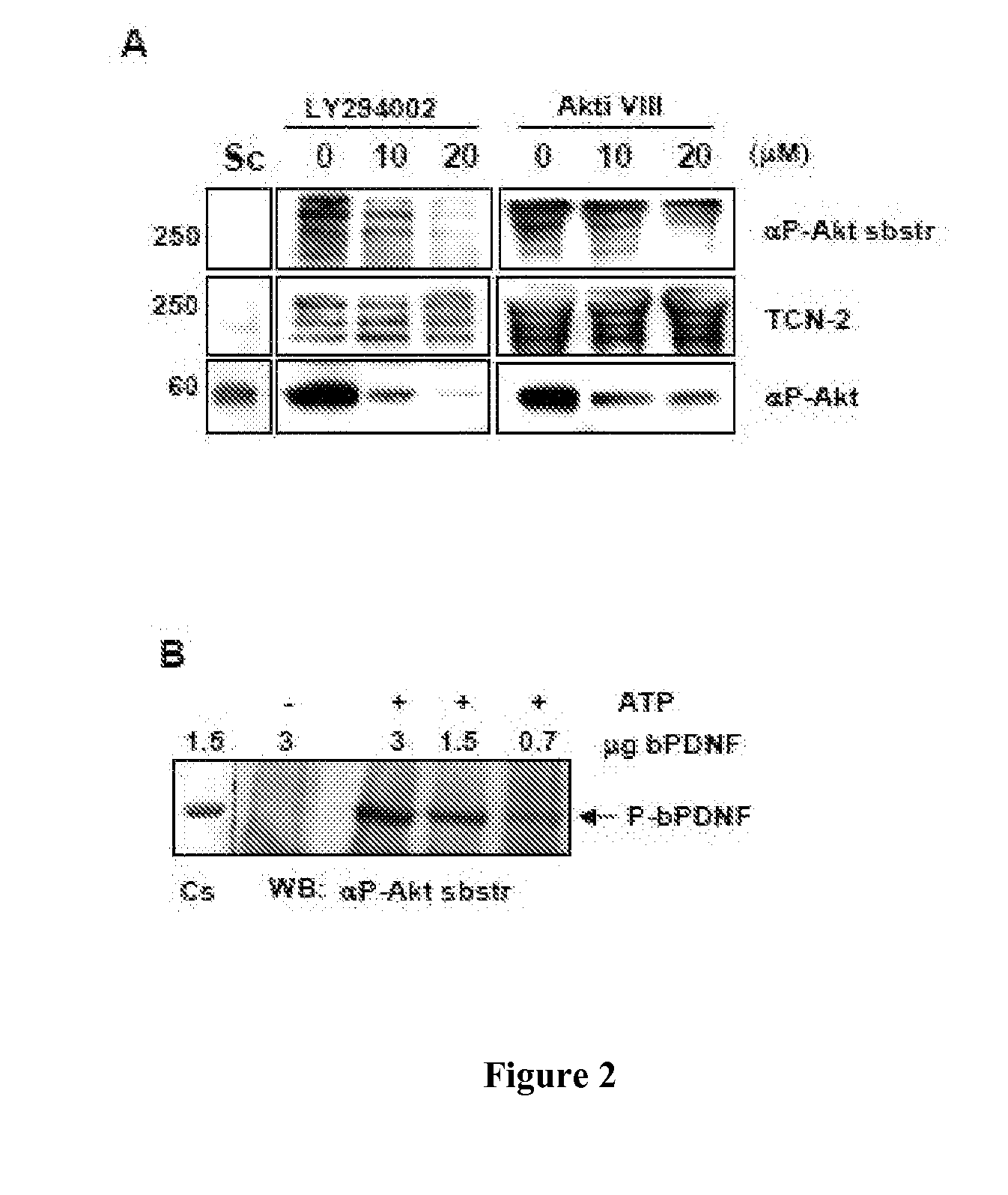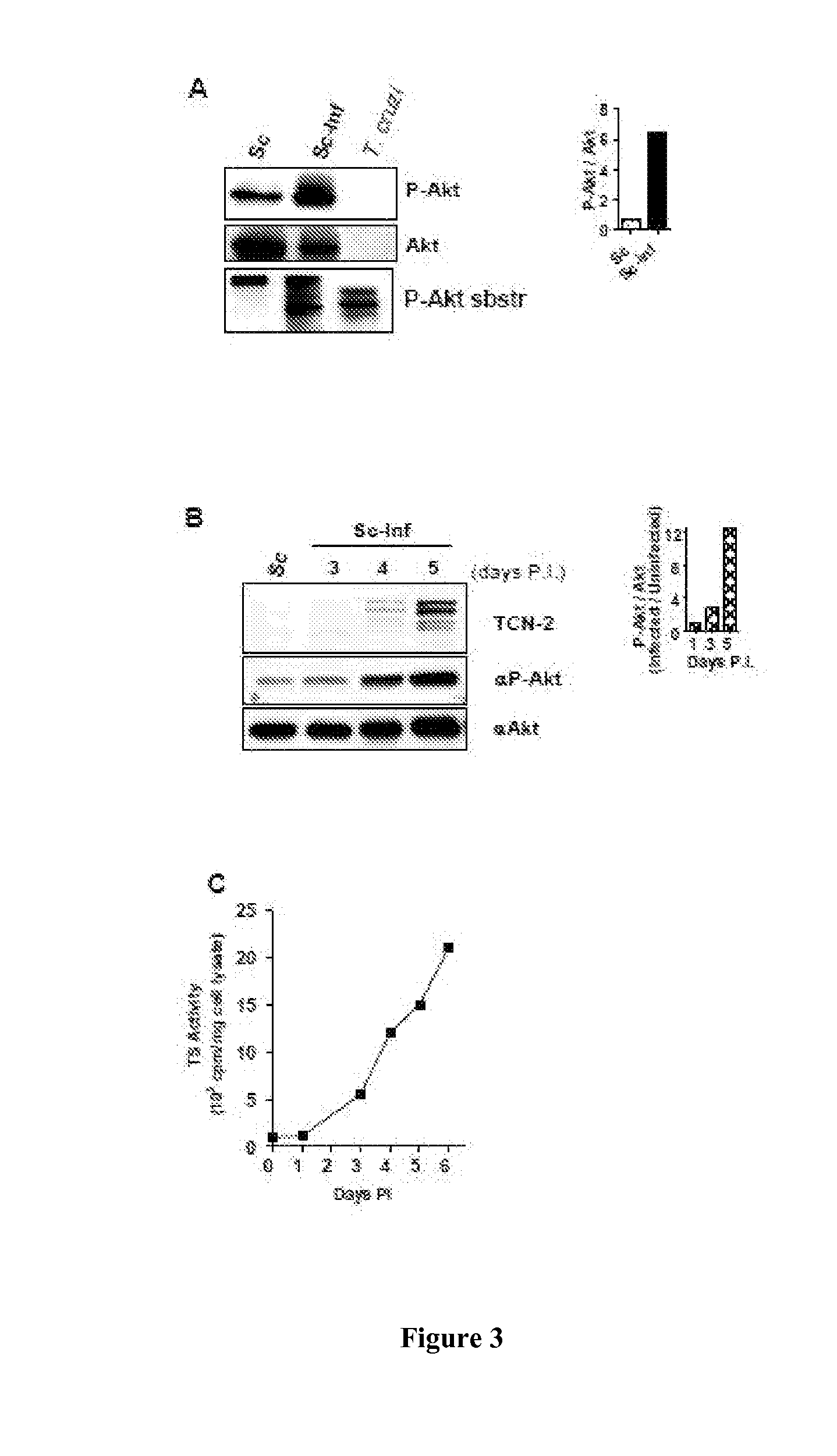Anti-apoptotic agents and uses thereof
a technology of apoptotic agents and anti-apoptotic agents, applied in the field of antiapoptotic agents, can solve the problems of insufficient diffusion of gdnf from the lateral ventricle, severe adverse effects, lack of efficacy, etc., and achieve the effect of reducing the effect of an apoptotic-inducing agen
- Summary
- Abstract
- Description
- Claims
- Application Information
AI Technical Summary
Benefits of technology
Problems solved by technology
Method used
Image
Examples
example 1
Anti-Apoptotic Effect of Cytoplasmic PDNF
[0163]In this example, we show that in the cytosol, parasite-derived neurotrophic factor (PDNF), a trans-sialidase that is located on the surface of T. cruzi, is a substrate and an activator of the serine-threonine kinase Akt, a prototypic anti-apoptotic molecule. PDNF was shown to increase the expression of the gene that encodes Akt while suppressing the transcription of genes that encode pro-apoptotic factors. Consequently, PDNF elicited a sustained functional response that protects host cells from apoptosis induced by oxidative stress and the pro-inflammatory cytokines tumor necrosis factor-α and transforming growth factor-β. Given that PDNF was also shown to activate Aid by binding to the neurotrophic surface receptor TrkA, we propose that this protein activates survival signaling both at the cell surface by acting as a receptor-binding ligand and inside cells, downstream of the receptor, by acting as a scaffolding adaptor protein.
[0164]1...
example 2
Materials and Methods
[0193]1. Materials
[0194]Dulbecco's modified Eagle's medium (DMEM), penicillin / streptomycin stock, fetal calf serum (FCS), and G418 were from GIBCO; DAPI (4′,6-diamidino-2-phenylindole) and LY294002 were from Sigma and the Aid inhibitor Akti VIII was from EMD Chemicals. Antibodies against pAkt (Ser473 and Thr308), Akt, and phosphorylated substrates of Akt were from Cell Signaling Technology. The PDNF-specific mAB TCN-2 (T cruzi neuraminidase monoclonal antibody-2) was isolated as described earlier (23). Alexa-conjugated anti-mouse and anti-rabbit secondary antibodies were from Molecular Probes and the horse radish peroxidase (HRP)-conjugated secondary antibody was from Chemicon. The ECL kit was purchased from PerkinElmer. The antiprotease cocktail was from Roche Molecular Biochemicals. Recombinant, full-length PDNF cDNA (clone 19Y) was expressed in E. coli and purified by affinity chromatography, and the trans-sialidase activity assay was performed as described b...
PUM
| Property | Measurement | Unit |
|---|---|---|
| pH | aaaaa | aaaaa |
| TGF-β | aaaaa | aaaaa |
| TNF-α | aaaaa | aaaaa |
Abstract
Description
Claims
Application Information
 Login to View More
Login to View More - R&D
- Intellectual Property
- Life Sciences
- Materials
- Tech Scout
- Unparalleled Data Quality
- Higher Quality Content
- 60% Fewer Hallucinations
Browse by: Latest US Patents, China's latest patents, Technical Efficacy Thesaurus, Application Domain, Technology Topic, Popular Technical Reports.
© 2025 PatSnap. All rights reserved.Legal|Privacy policy|Modern Slavery Act Transparency Statement|Sitemap|About US| Contact US: help@patsnap.com



